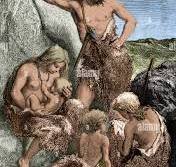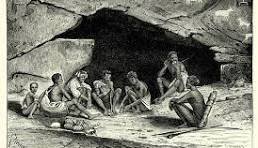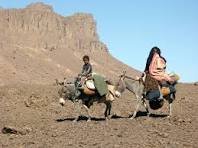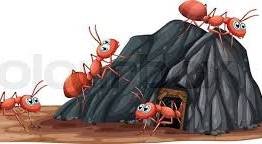The Tree of Humans: Patriarchy and Other Family Systems
Veteran flyer and explorer of the Ocults *Wing Cdr. Dr. S S Malik (R) fathoms the logic of Family and socio-genetic collectiveness ……(serialised)
Human races from the very beginning have been moving together for reasons of safety, mutual communication, search for food and confortable environment. Compulsion for Family formation and regulation were the after-thoughts based on needs of living together orderly….!
This article explores the evolution of family systems, focusing on the transition from matriarchy to patriarchy and the impact of economic systems like capitalism on gender dynamics. Historically, family systems like patriarchy and matriarchy arose from complex interactions of biological, cultural, economic, and social factors. While matriarchal societies, with women holding primary authority, were less common, they existed in certain cultures where women’s roles were central. The article argues that patriarchy became dominant due to agriculture and warfare, leading to male control over land and resources.
women’s roles were central. The article argues that patriarchy became dominant due to agriculture and warfare, leading to male control over land and resources.
(a) The emergence of new religions promoted male dominance and relegated women to subordinate roles.
(b) Role played by HNIs (high networth individuals) in influencing humans on planet Earth.
(c) Capitalism is the primary culprit behind women’s issues rather than patriarchy. The gender pay gap and workplace inequalities are due to profitdriven economies.
(d) Capitalism has significantly impacted family structures, leading to family fragmentation due to industrialisation and migration, and commodification of intimacy capitalising on the breakdown of traditional families.
(e) Complete gender equality might be impractical but a system based on individual abilities and capabilities within a loving family unit is achievable, a more equitable and just society that values the contributions of all
individuals, regardless of gender.
Introduction: A method, order or control system in the human ecosystem is essential to form a society. It is also a requirement for survival, success, development and growth for any group. Family systems such as Patriarchy, Matriarchy and some other systems have emerged throughout history as responses to a complex interplay of biological, cultural, economic, and social factors.
These systems reflect the power dynamics within families and societies and how those dynamics shape roles, responsibilities, and identities. In many Eastern cultures, the extended family system has historically been central, with multiple generations living together or near each other. This structure emphasises filial piety (respect for elders), intergenerational support, and collective responsibility. Some societies have family structures that emphasise collective ownership and decision-making. These structures often extend beyond the nuclear family to
include a broader kinship network of grandparents, uncles, aunts, cousins, and others.
Ancient philosophers realised that humans are interconnected with the universe. There is a feeling that we are the fruits of a bigger tree. There is an antithesis to this philosophy in the new religions in revelations that put us in  charge without specifying any clear objectives. New religions had no women gods, and some had no women priests as compared to the older traditions which had many gods and goddesses. New economic systems such as capitalism and communism replaced the agrarian system for the majority of the population leading to a change
charge without specifying any clear objectives. New religions had no women gods, and some had no women priests as compared to the older traditions which had many gods and goddesses. New economic systems such as capitalism and communism replaced the agrarian system for the majority of the population leading to a change
in the way a family stayed, lived and worked.
Natural Ecosystems : Every life form thrives in an interconnected ecosystem, be it flora, fauna or us human beings.
A pattern of orderliness can be seen in nature. Entropy is a measure of the disorder of a system and it always increases except where consciousness is in control. Orderliness is a law and a mark of consciousness.
A conscious being is a different entity having the power to understand, interpret and make changes to its surroundings. Such individuals have a life cycle and reproduce by various means such as budding, sweating, laying eggs or from the womb. They survive and thrive in interconnected ecosystems with other living organisms. These organisms live together in an interdependent group called society.
A society is companionship, friendly association with others, from Old French societe “company”. Modern French société), from Latin word ‘societatem’ (nominative societas) “fellowship, association, alliance, union, community,” from socius “companion, ally,” from PIE *sokw-yo-, suffixed form of root *sekw- (1) “to follow.” The meaning “people bound by neighbourhood and intercourse aware of living together in an ordered community” is from the 1630s. Animal kingdom societies can be termed as colonies, herds, flocks and packs.
If all the forms of life on earth were asexual or androgynous, such a society would be complex. However, creation or evolution has taken a course for its sake. The reason could be the natural selection. The organisms with optimal genetic coding would thrive. The heterosexual nature of species starts from the plant kingdom. Some species of trees can be either dioecious or monoecious, which means they have separate male and female parts or both
on the same tree. Dioecious trees have separate male and female trees, with male trees producing pollen a nd female trees producing fruit or seeds. Since the trees are immobile, they rely on wind and insects to pollinate.
nd female trees producing fruit or seeds. Since the trees are immobile, they rely on wind and insects to pollinate.
While plants do not have a “society” in the way animals or insects might, they exhibit complex interactions within plant communities. Plants often compete for light, water, and nutrients, but they also cooperate in intricate ways. For example, plants may form symbiotic relationships with nitrogen-fixing bacteria or fungi, improving nutrient availability for the entire plant community. Some plants engage in allelopathy, releasing chemicals into the soil to inhibit the growth of competitors.
Ants are integral to many ecosystems, playing key roles as predators, scavengers, and mutualists. They help regulate insect populations, disperse seeds, aerate the soil, and recycle organic matter. As social insects, ants create highly organised colonies, often with specialised functions (workers, soldiers, queens) that contribute to the colony’s functioning. Ants are the epitome of eusociality, a high level of social organization where individuals of the same species co operate in tasks like foraging, defending the colony, and caring for the queen and brood (eggs, larvae, pupae). The colony operates as a superorganism, where the collective effort of individual ants achieves goals that would be impossible for a single ant.
operate in tasks like foraging, defending the colony, and caring for the queen and brood (eggs, larvae, pupae). The colony operates as a superorganism, where the collective effort of individual ants achieves goals that would be impossible for a single ant.
Termites are another example of eusocial insects, with highly structured societies centred around a single reproductive pair—the king and queen. Termite colonies consist of workers, soldiers, and reproductive individuals, each with distinct roles. The social structure of a termite colony is critical for its success, as it allows for complex behaviours like building and maintaining intricate nests, protecting the colony from threats, and efficiently gathering and processing food.
In certain animal species, the concept of society or herd refers to the organized social structure or grouping in which individuals live and interact. These groupings serve various purposes and are often based on survival, reproduction, and the fulfilment of basic needs. Any society would represent an evolutionary strategy to maximise survival, foster cooperation, and ensure the propagation of the species. (to be continued…..)
(pics credit-Wikipedia, iStocks.com, ColorBox)
—————————
*Dr Satinder Singh Malik: was commissioned into the Indian Air Force in 1997 as a fighter pilot. He flew state-of-the-art Su-30 MKI fighters. He is a keen skydiver, river rafter and mountaineer. He has climbed several peaks including Mt Kilimanjaro , visiitng Mt. Kailash and Lake Mansavroar. He was also part of mountaineering expedition to Antartica. Having interest in Science of Yoga, Pragyan Brahama philosophy etc. he has written several papers for Scientific God journal and JCER (Journal of Consciousness Exploration and Research) and books such as Beyond Common Science, A Logic of Every Being. Wing Cdr.. Malik reflects on deep insights provided by his Gurus Pilot Babaji and Mahavatar Babaji.
several peaks including Mt Kilimanjaro , visiitng Mt. Kailash and Lake Mansavroar. He was also part of mountaineering expedition to Antartica. Having interest in Science of Yoga, Pragyan Brahama philosophy etc. he has written several papers for Scientific God journal and JCER (Journal of Consciousness Exploration and Research) and books such as Beyond Common Science, A Logic of Every Being. Wing Cdr.. Malik reflects on deep insights provided by his Gurus Pilot Babaji and Mahavatar Babaji.

Comments are closed.